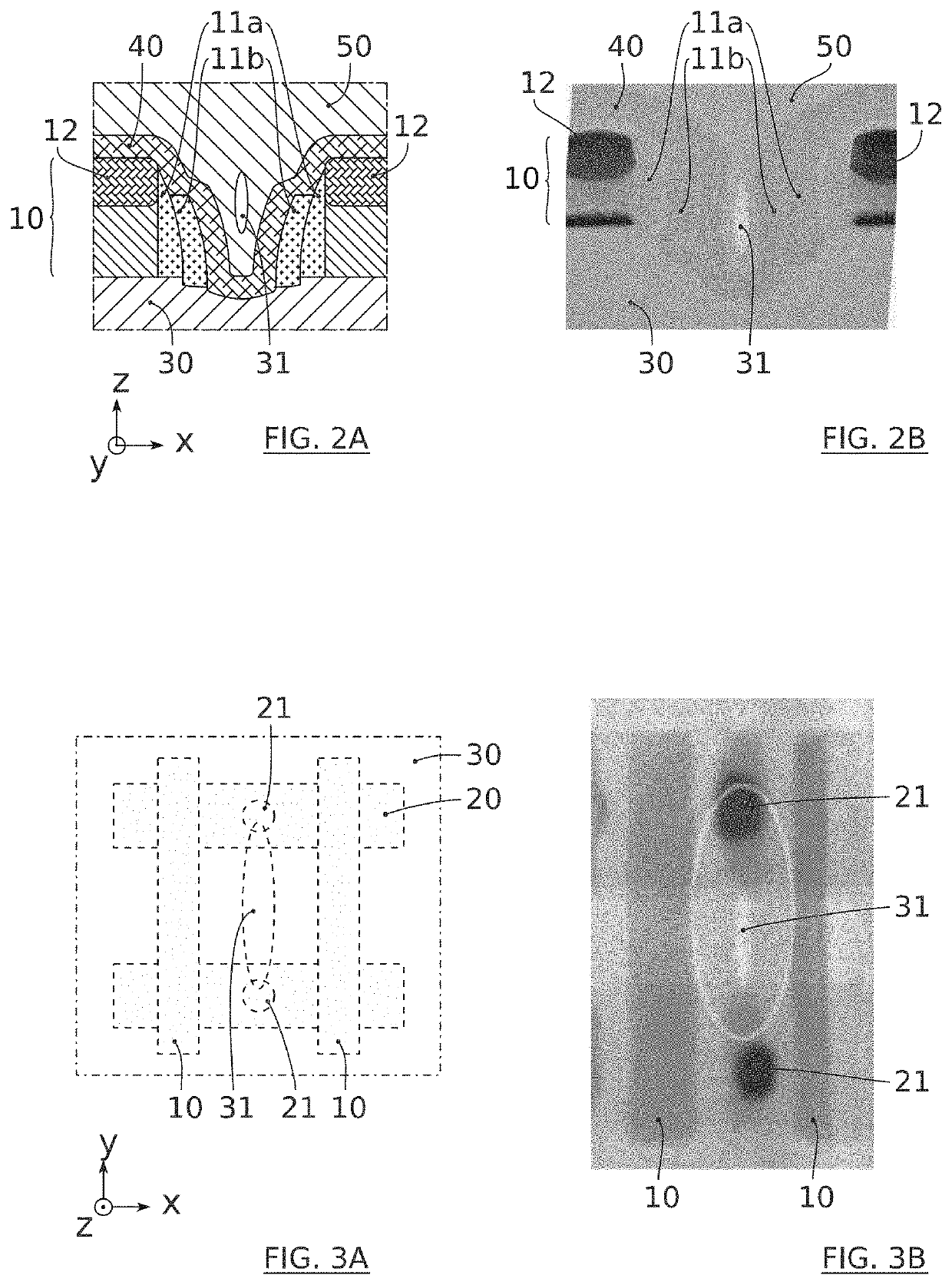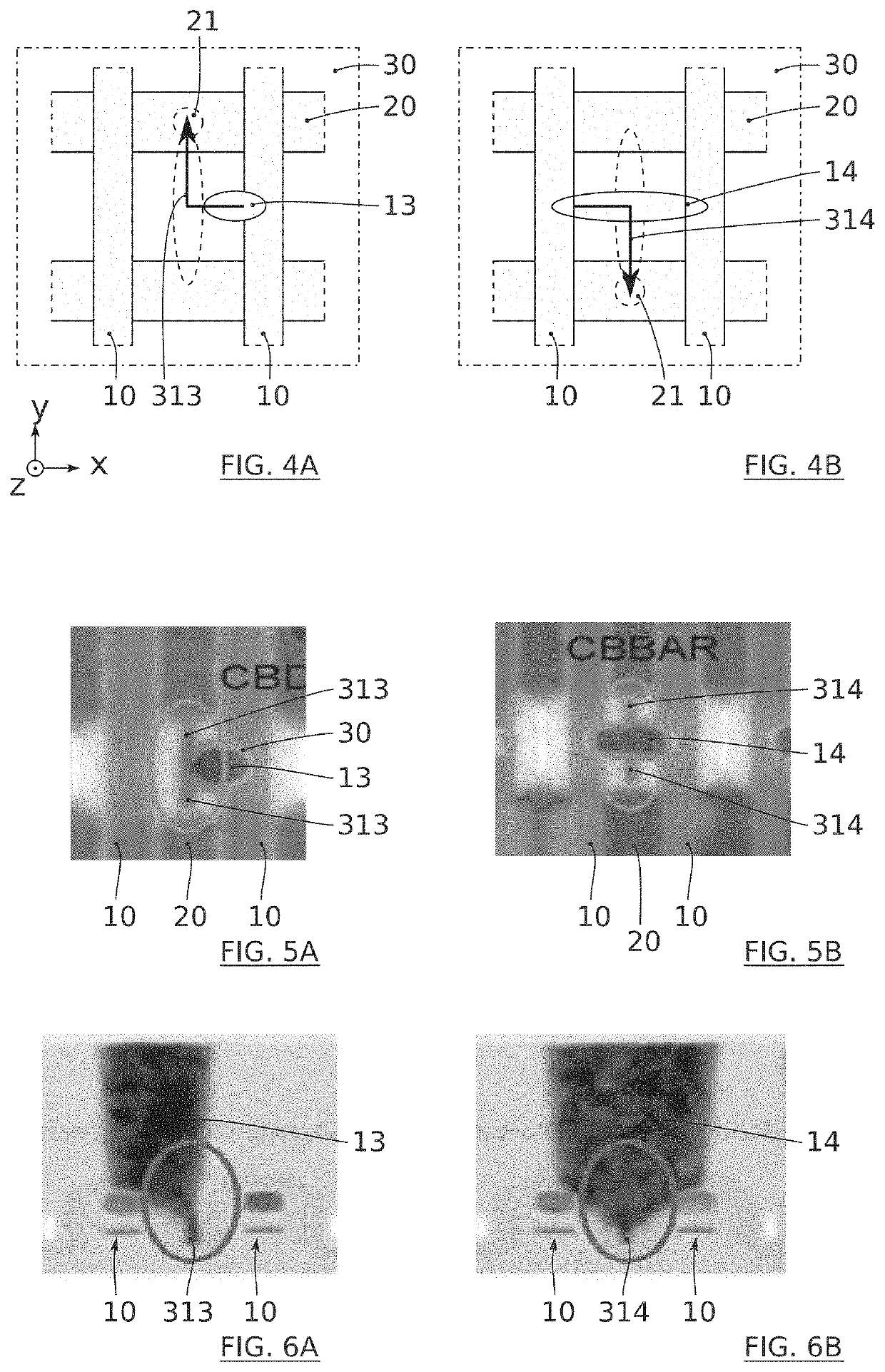Method of manufacturing microelectronic components
- Summary
- Abstract
- Description
- Claims
- Application Information
AI Technical Summary
Benefits of technology
Problems solved by technology
Method used
Image
Examples
first embodiment
[0131]The first embodiment is shown in FIG. 9A to 9C. FIG. 9A shows a sectional view of two adjacent gates flanked by the first spacers 11 a and the second spacers 11b, prior to the silicidation of the upper portions 121, FIG. 9B shows the positioning of the step of removing the second spacers 11b, also known as SPT (Spacer Proximity Technology), in the sequence of steps of the NiSi module, FIG. 9C shows a sectional view of two adjacent gates flanked by the first spacers 11a and comprising silicided portions 12, as obtained at the end of the NiSi module modified by the SPT step.
[0132]According to this first embodiment, the removal of the second spacers 11b is carried out at the very beginning of the NiSi module, before the “deposition preparation” step. Such a “deposition preparation” step is generally aimed at removing native oxide and / or impurities, for example of the organic or metallic type, at the tip of the gates and / or the sources and drains. It can comprise at least one prep...
second embodiment
[0134]The second embodiment is shown in FIG. 10A to 10C. FIG. 10A shows a sectional view of two adjacent gates flanked by the first spacers 11a and the second spacers 11b, prior to the silicidation of the upper portions 121. FIG. 10B shows the positioning of the SPT step in the sequence of steps of the NiSi module. FIG. 10C shows a sectional view of two adjacent gates flanked by the first spacers 11 a and comprising silicided portions 12, as obtained at the end of the NiSi module modified by the SPT step.
[0135]According to this second embodiment, the removal of the second spacers 11b takes place immediately after the “deposition preparation” step, before the NiPt deposition step.
[0136]The NiPt deposition can typically comprise, prior to the actual deposition, a prior soft etching aiming at removing any remaining contaminants and ensure that no interfacial oxide is present prior to deposition. This prior soft etching can be carried out via a SiCoNi™-type method.
[0137]The SPT can take...
third embodiment
[0138]The third embodiment is shown in FIG. 11A to 11C. FIG. 11A shows a sectional view of two adjacent gates flanked by the first spacers 11a and the second spacers 11b, prior to the silicidation of the upper portions 121. FIG. 11B shows the positioning of the SPT step in the sequence of steps of the NiSi module. FIG. 11C shows a sectional view of two adjacent gates flanked by the first spacers 11 a and comprising silicided portions 12, as obtained at the end of the NiSi module modified by the SPT step.
[0139]According to this third embodiment, the removal of the second spacers 11b takes place before the “thermal anneal 2” step, preferably immediately after the “partial NiPt removal” step. The thermal anneal 2 can be rapid thermal annealing known as RTA or laser annealing. The thermal anneal 2 in particular allows the diffusion and reaction of the nickel in the upper portions 121 to be finalised so as to obtain the silicided portions 12. The SPT can take place with the different etc...
PUM
 Login to View More
Login to View More Abstract
Description
Claims
Application Information
 Login to View More
Login to View More - R&D
- Intellectual Property
- Life Sciences
- Materials
- Tech Scout
- Unparalleled Data Quality
- Higher Quality Content
- 60% Fewer Hallucinations
Browse by: Latest US Patents, China's latest patents, Technical Efficacy Thesaurus, Application Domain, Technology Topic, Popular Technical Reports.
© 2025 PatSnap. All rights reserved.Legal|Privacy policy|Modern Slavery Act Transparency Statement|Sitemap|About US| Contact US: help@patsnap.com



